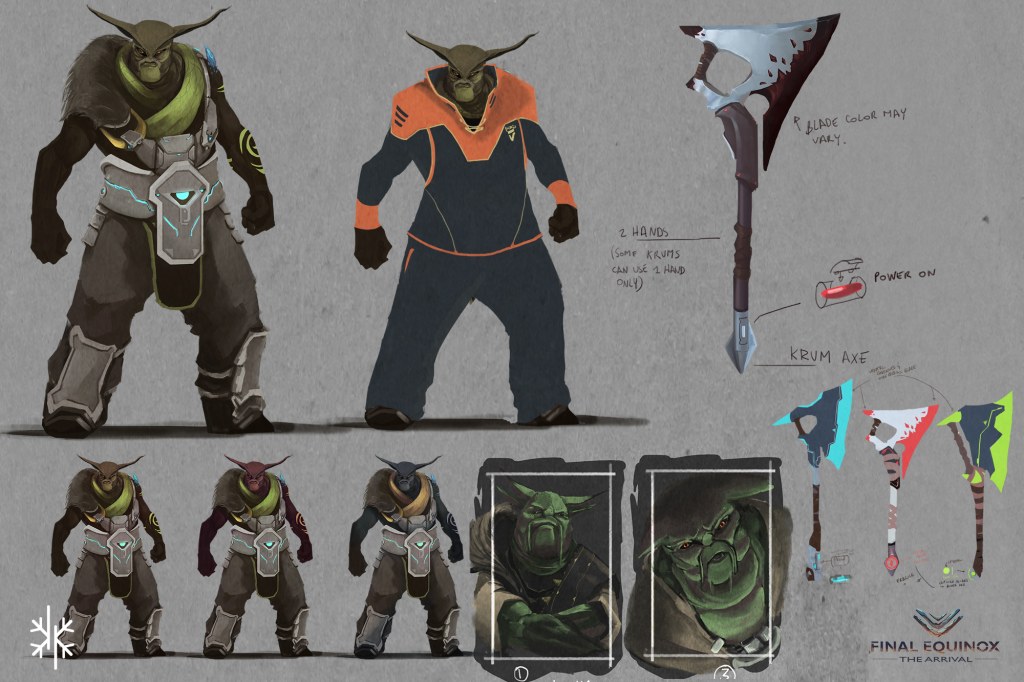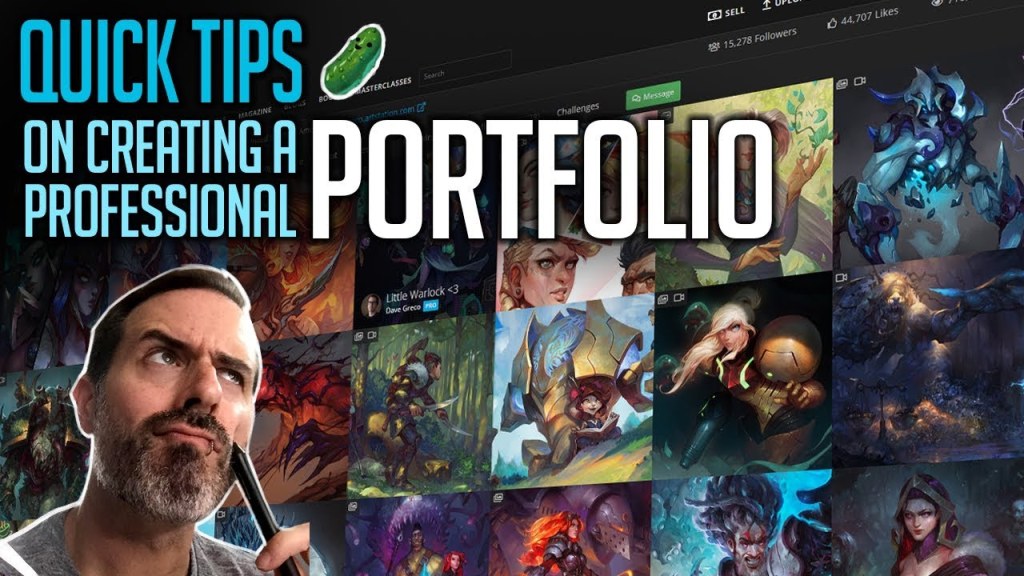How to Make a Concept Art Portfolio: A Guide for Art Enthusiasts
Greetings, art enthusiasts! Are you passionate about concept art and looking to showcase your skills and creativity? Having a well-crafted concept art portfolio is crucial for gaining recognition and opportunities in the industry. In this article, we will guide you through the process of creating an impressive concept art portfolio that will grab the attention of potential clients and employers. Let’s dive in!
What is a Concept Art Portfolio?
Before we delve into the details, let’s clarify what a concept art portfolio is. In simple terms, it is a collection of artwork that showcases your skills, imagination, and ability to bring ideas to life. A concept art portfolio typically includes illustrations, character designs, environment concepts, and other visual representations that demonstrate your artistic abilities within the field.
Who Needs a Concept Art Portfolio?

Image Source: steemitimages.com
If you aspire to work as a concept artist in industries such as gaming, animation, film, or advertising, having a concept art portfolio is essential. It serves as a visual resume that allows potential clients, employers, or art directors to assess your skills, style, and suitability for their projects. Whether you are a seasoned professional or just starting your journey in the art world, a well-curated portfolio can make all the difference in landing your dream opportunities.
When to Start Building Your Concept Art Portfolio?
The answer is simple: start as soon as possible! Even if you are still learning or honing your skills, it’s never too early to start building your portfolio. The process of creating and refining your artwork takes time, so the earlier you start, the more you can grow and improve. Remember, a portfolio is an ongoing project that evolves with your artistic journey.
Where to Showcase Your Concept Art Portfolio?

Image Source: ytimg.com
In this digital age, having an online presence is crucial for reaching a wider audience and potential clients. There are various platforms where you can showcase your concept art portfolio, such as personal websites, online art communities, social media platforms, and professional networking sites. Additionally, having physical prints or a well-designed physical portfolio can also make a lasting impression during in-person meetings or interviews.
Why is a Concept Art Portfolio Important?
A concept art portfolio serves as a visual representation of your skills, creativity, and artistic style. It allows potential clients and employers to gauge your abilities and assess whether your artistic vision aligns with their projects. A well-crafted portfolio not only showcases your technical skills but also demonstrates your ability to think conceptually, solve problems, and bring ideas to life. In a competitive industry, a strong concept art portfolio can set you apart from the crowd and open doors to exciting opportunities.
How to Create a Concept Art Portfolio?

Image Source: ytimg.com
Now that we’ve established the importance of a concept art portfolio, let’s dive into the process of creating one. Here are the essential steps to follow:
Step 1: Define Your Goals and Audience
Before starting your portfolio, it’s crucial to define your goals and target audience. Are you looking to work in a specific industry or specialize in a particular style? Understanding your goals will help you tailor your portfolio to showcase your strengths and attract the right opportunities.
Step 2: Select Your Best Artwork
Review your existing artwork and select the pieces that best represent your skills and style. Choose a variety of artwork that showcases your versatility while maintaining a cohesive theme or visual narrative.
Step 3: Curate and Organize Your Portfolio
Arrange your selected artwork in a logical and visually appealing order. Consider the flow of your portfolio, starting with a strong opening piece and maintaining a balance between different art forms and styles throughout. Organize your artwork into categories or projects to make it easier for viewers to navigate.
Step 4: Present Your Artwork Professionally
Invest in presenting your artwork professionally. Ensure your digital portfolio is well-designed, easy to navigate, and showcases high-quality images of your artwork. If you opt for a physical portfolio, choose a high-quality binder or case that protects your prints and reflects your attention to detail.
Step 5: Seek Feedback and Iterate
Share your portfolio with trusted peers, mentors, or industry professionals and seek feedback. Constructive criticism can help you identify areas for improvement and refine your artwork further. Iterate and update your portfolio regularly to reflect your growth as an artist.
Step 6: Showcasing Your Portfolio
Once your portfolio is ready, start showcasing it on various platforms. Create a professional website or utilize existing online art communities and social media platforms to reach a wider audience. Network with industry professionals, attend events, and participate in portfolio reviews to gain exposure and build connections.
Advantages and Disadvantages of a Concept Art Portfolio
Advantages:
1. Showcases your skills and creativity to potential clients and employers.
2. Provides an opportunity to express your unique artistic style and vision.
3. Opens doors to exciting job opportunities and collaborations.
4. Helps you track your artistic growth and improvement over time.
5. Allows you to receive constructive feedback and learn from industry professionals.
Disadvantages:
1. Requires continuous effort to update and maintain your portfolio.
2. Can be time-consuming to curate and organize your artwork effectively.
3. Competing with other talented artists in a saturated industry can be challenging.
4. Rejection and criticism are inevitable, but serve as opportunities for growth.
5. Balancing personal artistic expression with client expectations can be a delicate process.
Frequently Asked Questions
1. How many pieces should I include in my concept art portfolio?
It’s best to include your strongest and most diverse artwork. Aim for a minimum of 10-15 pieces to demonstrate your skills and versatility without overwhelming the viewer.
2. Should I focus on a specific art style or genre in my concept art portfolio?
Having a specialized style or genre can help you stand out, but it’s also beneficial to showcase your adaptability. Include a range of artwork that demonstrates your ability to work in different styles and genres.
3. Can I include collaborative projects or fan art in my concept art portfolio?
Collaborative projects and fan art can be included in your portfolio if they showcase your skills and creativity effectively. However, it’s important to highlight your own contributions and obtain permission if necessary.
4. How often should I update my concept art portfolio?
Regular updates are essential to reflect your growth as an artist. Aim to update your portfolio at least once a year or whenever you have significant new artwork to showcase.
5. Is it necessary to have an online presence in addition to a physical portfolio?
In today’s digital age, having an online presence is highly recommended. It allows you to reach a wider audience, connect with potential clients and employers, and stay relevant in the ever-evolving art industry. However, having a physical portfolio can also leave a lasting impression in certain situations.
Conclusion
Building a concept art portfolio is a crucial step for any aspiring artist or professional in the field. By following the steps outlined in this guide, you can create a compelling portfolio that effectively showcases your skills, creativity, and potential. Remember to continuously update and refine your portfolio as you grow as an artist. Embrace the challenges, seek feedback, and never stop exploring new avenues for artistic expression. Now, go forth and create a concept art portfolio that will captivate and inspire!
Final Remarks
Disclaimer: The information provided in this article is for informational purposes only. The views and opinions expressed are those of the author and do not necessarily reflect the official policy or position of any organization or entity. The author does not endorse any specific platforms, websites, or services mentioned in this article. Readers are encouraged to do their own research and consider their individual circumstances before making any decisions.